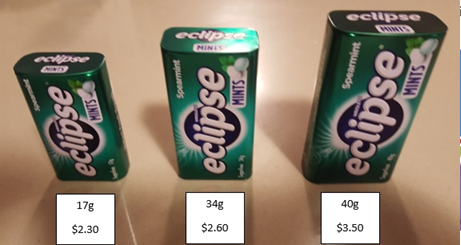Data Visualisation: The Power and the pitfalls…
A picture is worth a thousand words… but sometimes you need to read the words…
This article is equally applicable and valuable for those consuming data as for those producing data visualisations. For those of a certain age who grew up with grid-paper and light projectors (not these fancy Nancy tv-like things of today), the data visualisation of today is nothing short of magic. Once the domain of mathematicians, statisticians and scientists, today even those with the most basic computing knowledge can create powerful graphs, plots and visuals. Whether it is using the (not-so-humble) MS Excel or any number of new age BI tools such as Tableau, Qlik or PowerBI. As wonderful as this is, it does come with some risks and considerations that you must be aware of.
Most accept the output of their analyst or financial controller is a fair and accurate representation of the data, and usually it is, but you need to be vigilant about the visualisation you are interpreting. You will be surprised at how much power your analyst has in driving the commentary and direction of your decision-making process.
Let’s use a simple example to illustrate my point. Take the table of ‘Revenue’ below and the three visualisations following.
| FY14 | FY15 | FY16 | FY17 | FY18 | |
| Revenue | $100,000 | $110,000 | $118,000 | $124,000 | $127,000 |

Pretty different messages, aren’t they? Remember, this is the same data displayed in three different ways, but they drive completely different narratives – stability, growth and contraction. Visualisation 1 shows the revenue on a broad scale, it looks like it is growing but slowly. Visualisation 2 looks like you’re shooting the lights out, but did you notice the y-axis has been narrowed from $0 to $90k? Visualisation 3 again is the same data, but we’re showing the percentage growth year-on-year.
Now let me stress that none of these are incorrect, indeed, each offers an interesting and useful interrogation of the data. However, put in the wrong hands, an analyst or manager can go rogue and create/drive a narrative that may not necessarily be the truth of the situation.
So how do we address this? The short answer is to take the time to consider and reflect on the information you are being presented with. Look at the x/y axis – are they manipulated? Can/should this information be multidimensional? This is a long word to say that you can show two dimensions in one graph – this is a more holistic way of viewing this information.

Let us equally consider and reflect that this is a far superior method of communicating and consuming information than the traditional data sheet. No-longer do managers need to be mulling over numbers in their heads to interpret results – visualisation is a giant leap forward in business intelligence.
This is an oldie but a goodie – a favourite of many TED talks and undergraduate professors… let’s use military spending as an example of relativity…

Very different results – USA goes from number 1 and doesn’t even make the top 10. But how does this relate to your business analytics? Well, let’s trade countries for products and GDP for capital cost… now it is relevant. You and your analyst need to be able to look at data with a sense of relativity. I can pick a product out of a 2,000 product offering and make it look fantastic or poor – but in the broader scheme of things is it important? Are we looking at a 5c widget or a $500 console?
As per usual, let’s summarise. Data is important (let’s say essential), it, and its use, can make of break your business. Data visualisation in the scheme of things is relatively new, it is powerful and necessary, but you must be able to interrogate both the data and the source to ensure that what you are consuming is accurate and per requirement. One of my bug-bears is analysts producing comprehensive data visualisations and then not being invited into the discussion – this just leads to misinterpretation and a lack of insight. The source of your data intelligence should be part of your meetings and discussions as they (should be able to) clarify queries and conflicting interpretations on the fly.
Enjoy, use and consume data visualisations – they do consolidate incomprehensible data into a form that is digestible and quick to understand. However, be aware, be vigilant and be educated about what you are looking at. People (in general) are prone to running narratives and agendas that suit their interests. It is remarkably easy to interpret the same information in many different ways to deliver a message that meets one’s own goals.
Stay tuned – next time we’re going to talk about data visualisation (BI) tools and what you should be looking at for your business.



